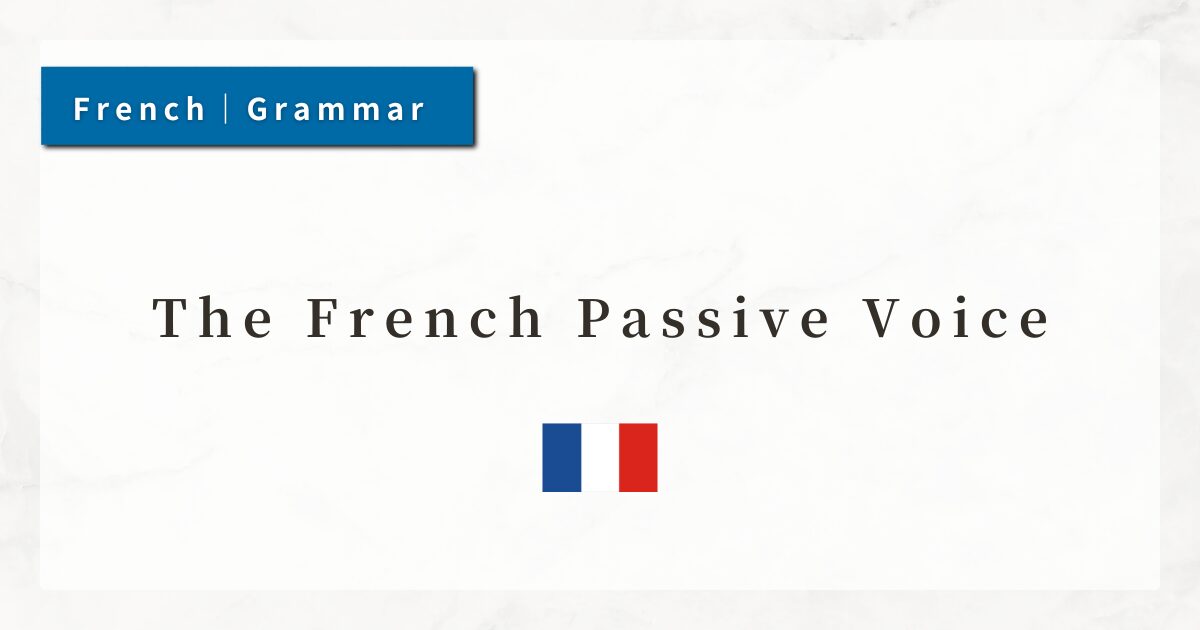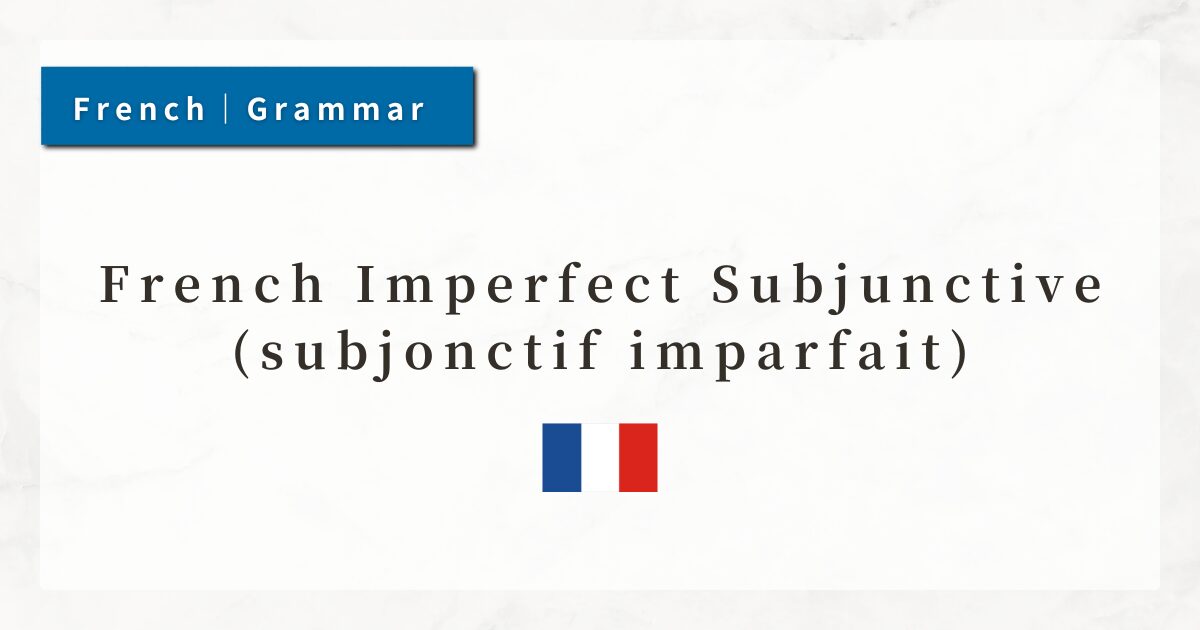#43 The French Passive Voice | How to Form and Use Passive Constructions

In French, when the subject is the receiver of an action, the passive voice is used.
Just like in English, the passive voice expresses “to be acted upon” rather than “to act.”
In this lesson, I will explain the basic structure and usage of the French passive voice.
1. Structure of the Passive Voice
The passive voice in French is used when the subject is the recipient of an action.
Its structure resembles the English passive (be + past participle), but in French additional rules apply, such as agreement of gender and number.
Basic pattern:
- Subject + être (conjugated) + past participle + (par + agent)
The construction “être + past participle” forms the core of the passive voice.
In addition, the past participle must agree in gender and number with the subject:
- add -e for feminine singular,
- add -s for plural.
This requirement has no equivalent in English.
2. Gender and Number Agreement
The most important feature of the French passive voice is that the past participle must agree with the subject in gender and number.
This rule also applies in other compound tenses, but in the passive (être + past participle) it is particularly prominent.
- Masculine singular:
Le document est signé.
(The document is signed.) - Feminine singular:
La lettre est signée.
(The letter is signed.) - Masculine plural:
Les documents sont signés.
(The documents are signed.) - Feminine plural:
Les lettres sont signées.
(The letters are signed.)
To use the passive voice correctly, you must master the agreement patterns of the past participle.
3. Adjusting Tense with être
The tense of the passive construction depends on the conjugation of être.
- Present:
Le film est vu par beaucoup de gens.
(The film is seen by many people.) - Passé composé:
Le film a été vu hier soir.
(The film was seen last night.) - Imparfait:
Le film était vu chaque semaine.
(The film was being seen every week.) - Future simple:
Le film sera vu demain.
(The film will be seen tomorrow.)
4. The Use of par (by) Can Be Omitted
The preposition par in the passive voice corresponds to “by” in English.
Just like in English, when the agent is unknown or unimportant, “par + agent” is often omitted in French.
- La décision a été prise.
(The decision was made — the agent is not specified) - Les résultats ont été publiés.
(The results were published — who published them is not important)
Thus, the passive voice is often used in news reports or formal announcements as a neutral expression that emphasizes the action itself rather than the agent.
5. Summary
- The French passive voice is formed with “être + past participle.” The past participle must agree with the subject in gender and number.
- The tense of être determines the tense of the sentence (e.g., est / a été / sera).
- “par + agent” is used only when necessary and is often omitted.
- Mastery of agreement and tense is key. A clear grasp of sentence structure is essential for using the passive voice correctly.




